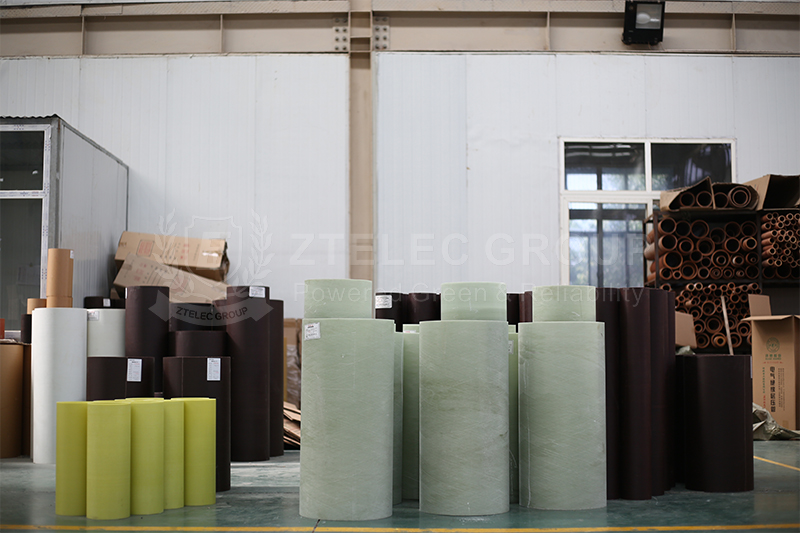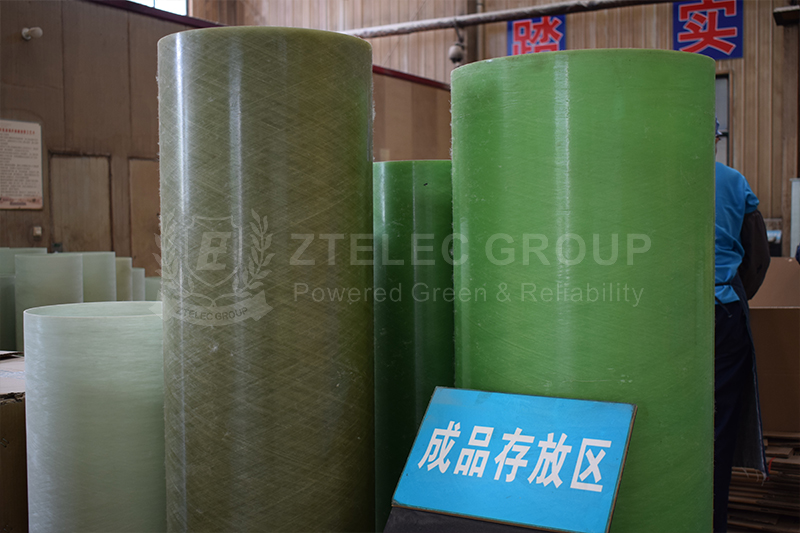In cutting-edge industries such as electronic information and new energy batteries, copper foil tubes, as important basic components, play a key role in supporting and winding copper foil. Its quality directly affects the performance and reliability of downstream products. From precision printed circuit board manufacturing to the production of high-performance lithium batteries, high-quality copper foil tubes are indispensable. Therefore, a set of strict and comprehensive quality control standards is essential. Let’s take a closer look at what the quality control standards for copper foil tubes are.
Appearance quality is the primary consideration for quality control of copper foil tubes. The surface of a qualified copper foil tube should be flat and smooth, without visible bubbles, cracks, dents, scratches, and impurities.
The presence of bubbles will destroy the structural integrity of the material and reduce its overall strength. Cracks and dents may cause stress concentration during subsequent use, resulting in the breakage of the tube. Scratches and impurities not only affect the appearance, but may also interfere with the normal winding and lamination of the copper foil.

Dimensional accuracy is one of the core indicators of copper foil core tube quality control. Its inner diameter, outer diameter and wall thickness dimensions must strictly meet the design requirements, and even slight dimensional deviations may have serious consequences. The inner diameter determines the degree of fit between the tube and the equipment shaft. Excessive dimensional deviation will lead to installation difficulties, and even problems such as shaking and slipping during operation, affecting production efficiency and product quality.
The outer diameter size is related to the number of winding layers of copper foil and the overall space utilization. Inaccurate outer diameter will cause irregular winding of copper foil. Wall thickness uniformity directly affects the strength and rigidity of the tube. Uneven wall thickness will cause the core tube to bear excessive local load when subjected to force, shortening its service life.
In production, high-precision calipers, micrometers and other measuring tools are used to measure different parts of the copper foil tube at multiple points to strictly control the dimensional error within the specified range.
Physical and chemical properties are crucial for the stable use of copper foil tubes in different environments. In terms of physical properties, the tube needs to have a suitable thermal expansion coefficient that matches the thermal expansion coefficient of the copper foil and other contact materials. This can prevent them from generating stress due to inconsistent expansion and contraction when the temperature changes, causing the copper foil to separate from the tube or the tube itself to deform. In terms of chemical properties, the copper foil tube should have good corrosion resistance and be able to resist the erosion of chemical substances such as acids and alkalis to avoid reducing material properties due to chemical corrosion. In addition, in the field of electronic applications, the copper foil tube must also have excellent insulation properties to prevent safety hazards such as short circuits.

Mechanical properties are an important basis for measuring the quality of copper foil tubes, mainly covering indicators such as tensile strength, bending strength and compression strength.
Tensile strength determines the ability of the copper foil tube to resist fracture when subjected to axial tension. During the copper foil winding process, the tube needs to withstand a certain amount of tension. If the tensile strength is insufficient, it is very easy to break.
Bending strength reflects the ability of the copper foil tube to resist deformation when subjected to bending load, ensuring that it will not be damaged by external bending during transportation and installation.
Compression strength ensures that the copper foil tube will not be unstable and deformed when subjected to external pressure. Through professional mechanical property testing equipment, the stress conditions in actual use are simulated, and the performance of the tube is tested to select products that meet the use requirements.
In addition to the above properties, the winding performance and surface properties of the copper foil tube cannot be ignored. The winding performance requires that the copper foil tube remains stable during high-speed winding, without slipping, jamming, etc., to ensure that the copper foil can be evenly and tightly wound on the tube.
Surface performance is mainly reflected in surface roughness. Appropriate surface roughness can increase the friction between the copper foil and the copper foil tube, making the copper foil fit more firmly, and also help improve the flatness and aesthetics of the copper foil winding.
The quality control standards for copper foil tubes run through multiple aspects such as appearance, size, mechanics, physical chemistry, winding and surface performance. Only by strictly following these standards and using scientific testing methods and advanced production processes can high-quality copper foil tubes be produced.
If you need our products please write down any questions, we will reply as soon as possible.
There are three ISO certificates for quality certification. The certificates will be shown later. ISO
After receiving the advance payment, the production cycle is 15-25 days. And the transportation cycle should be calcul……
We supply with installation guide and user manual for each transformer. If you do not understand them. We will offer v……